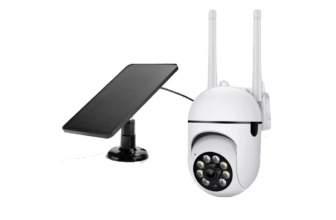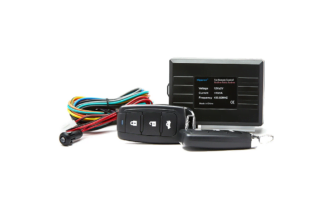The step-by-step guide “How to prevent security camera hacking” is designed to help individuals protect their security cameras from being hacked. The guide outlines practical steps and best practices to enhance the security of your camera system and prevent unauthorized access. By following the guide, users can learn how to secure their cameras and safeguard their privacy and security.
Ensuring Security Camera Safety | Tips to Prevent Camera Hacking
Identify Vulnerabilities
Inspect your security camera system thoroughly to pinpoint any vulnerabilities that hackers could potentially exploit. Start by evaluating the physical placement of your cameras to ensure they are not easily accessible or tampered with. Check for any exposed cables or connections that could be manipulated.
Next, review the software and firmware of your cameras for any outdated versions or known security flaws. Regularly update and patch your camera system to protect against potential vulnerabilities. Additionally, change default passwords and implement strong authentication measures to enhance security. Be sure to monitor network traffic and access logs for any suspicious activity that may indicate a breach. Regularly assess your security camera system to stay one step ahead of potential threats.
Change Default Passwords
Change the default passwords on your security cameras immediately. Access the settings of each camera and locate the password change option. Create a strong, unique password for each device, combining upper and lower case letters, numbers, and special characters. Avoid using easily guessable information like birthdays or common phrases. Ensure your new passwords are at least 12 characters long to enhance security.
Regularly update your security camera passwords to prevent unauthorized access. Implement a password management system to securely store and manage your passwords. By changing default passwords and using strong, unique passwords for each device, you significantly reduce the risk of security breaches on your camera system.
Update Firmware Regularly
To keep your security cameras secure, ensure you regularly update their firmware by checking for and applying available updates. Firmware updates often include critical security patches that protect your cameras from vulnerabilities that could be exploited by hackers. To begin, access the camera’s settings menu either through the camera’s web interface or dedicated mobile app. Look for the “Firmware” or “System Update” section and check for any available updates. If updates are available, follow the on-screen prompts to download and install them. Remember to restart your cameras after the update process to ensure the changes take effect.
For example, if you are using a popular brand of security cameras such as “Brand X,” you can visit the manufacturer’s website to find the latest firmware updates specific to your camera model. By regularly updating your cameras’ firmware, you can enhance their performance, fix any bugs, and most importantly, bolster their security to keep your property safe.
Secure Network Access
Secure your network by implementing firewalls to create a barrier between your security cameras and potential threats. Configure your firewall to restrict incoming and outgoing traffic based on predefined security rules, thereby preventing unauthorized access to your camera feeds. Utilize encryption protocols such as WPA2 for your Wi-Fi network to safeguard the data transmitted between your cameras and monitoring devices. Ensure that all default passwords on your security cameras are changed to strong, unique passwords to deter hacking attempts. Regularly update your camera firmware to patch any security vulnerabilities that could be exploited by cybercriminals. Conduct periodic security audits to identify and address any weaknesses in your network setup. By combining firewalls, encryption, password management, and routine maintenance, you can enhance the security of your network and protect your security cameras from unauthorized access.
Disable Remote Access
To disable remote access features on your security cameras, access the camera settings through the manufacturer’s app or web portal. Locate the section that controls remote access options. Disable any features that allow remote access to your cameras, such as cloud storage or remote viewing. Save the changes and test the camera to ensure that remote access is no longer functional.
By disabling remote access features that are not needed, you can significantly reduce the potential entry points for hackers looking to compromise your security system. Regularly review and update your camera settings to maintain a secure environment and protect your privacy and data.
Monitor Camera Activity
Regularly monitor the activity of your security cameras for any suspicious behavior or unauthorized access attempts. Check your security camera footage daily to ensure all areas under surveillance are being properly monitored. Look for any unusual activity such as individuals loitering around your property or trying to gain access to restricted areas. Keep an eye out for any unfamiliar vehicles parked near your premises or any tampering with the camera equipment.
Review the timestamps on the footage to identify any patterns of suspicious behavior, such as recurring visits at odd hours. Make note of any instances where individuals are attempting to conceal their identity or are acting in a furtive manner. If you notice any concerning activity, document the footage and report it to the appropriate authorities or your security provider immediately. Stay vigilant and proactive in monitoring your security cameras to ensure the safety and security of your property.
Protecting Your Security System Now
In conclusion, safeguarding your security cameras against hacking is crucial to protect your privacy and security. By following the steps outlined in this guide, such as setting strong passwords, regularly updating firmware, and enabling two-factor authentication, you can significantly reduce the risk of unauthorized access to your cameras. Stay vigilant and proactive in implementing these security measures to ensure the integrity of your surveillance system and maintain peace of mind.
Essential Equipment List
Protect Your System Now
Installation and Setup Instructions
- Determine the areas to monitor: Identify key areas where you want to install security cameras such as entrances, hallways, and high-value items
- Choose the right camera: Select a camera with features that suit your needs, such as night vision, motion detection, and remote viewing capabilities
- Install the cameras strategically: Position cameras at optimal angles for maximum coverage and ensure they are securely mounted to prevent tampering
- Set up monitoring and recording: Connect the cameras to a recording device or cloud storage to capture footage, and configure notifications for any suspicious activity
- Regular maintenance and monitoring: Check the cameras periodically for any issues, such as camera positioning or image quality, and review recorded footage as needed for security purposes
Keeping You Safe
Security cameras play a crucial role in investigating incidents or crimes by providing valuable visual evidence. They can capture real-time footage of the event, helping law enforcement agencies identify suspects, track their movements, and reconstruct the sequence of events. This visual evidence can be used in court proceedings to support or refute claims, ultimately aiding in the investigation and resolution of crimes. Additionally, security cameras act as a deterrent, reducing the likelihood of criminal activity in the first place.
Yes, security cameras can be used in businesses to improve operations. By monitoring activities in real-time and reviewing footage after incidents, security cameras help enhance safety, prevent theft, monitor employee performance, and maintain a secure work environment. Additionally, they can provide valuable insights into customer behavior, operational inefficiencies, and help in making informed decisions to improve overall business operations.
Security cameras are commonly used for surveillance and monitoring purposes in various settings such as homes, businesses, public areas, and government facilities. They help deter crime, provide evidence in case of incidents, monitor activities, and enhance overall security and safety. Additionally, security cameras are also used for traffic monitoring, crowd control, and in industrial applications for monitoring production processes and ensuring workplace safety.
Privacy concerns associated with security cameras include the potential for invasion of individuals’ privacy, as these cameras can capture images and footage of people without their consent. There is a risk of misuse of recorded data, such as unauthorized access, hacking, or sharing of footage. Additionally, the widespread deployment of security cameras raises questions about constant surveillance and the implications for personal freedom and civil liberties. It is important for organizations and individuals to consider these privacy implications when installing and using security cameras.
There are several types of security cameras available in the market, including:
- Dome Cameras: These are commonly used for indoor security and have a rounded dome shape that makes it difficult for people to tell which direction the camera is facing.
- Bullet Cameras: These cameras are typically used for outdoor surveillance and have a long, cylindrical shape resembling a bullet. They are visible and act as a deterrent to potential intruders.
- PTZ Cameras: Pan-Tilt-Zoom cameras can be remotely controlled to pan (move horizontally), tilt (move vertically), and zoom in on specific areas of interest. They offer flexibility and wide coverage.
- Wireless Cameras: These cameras connect to a Wi-Fi network, allowing for easy installation and setup without the need for extensive wiring.
- IP Cameras: Internet Protocol cameras transmit data over an IP network, providing high-quality images and remote access to footage through smartphones or computers.
- Thermal Cameras: These cameras detect infrared radiation (heat) emitted by objects to create images. They are effective for detecting movement in complete darkness or adverse weather conditions.
It’s important to consider your specific security needs and environment when choosing the right type of security camera for your setup.
Security cameras help in monitoring activities in a property by providing real-time surveillance of the premises. They can deter criminal activities, provide evidence in the event of a crime, and help in monitoring people’s behavior and activities. Additionally, security cameras can be accessed remotely, enabling property owners to keep an eye on their property even when they are not physically present. This can help in identifying potential security risks and taking necessary actions promptly.
When installing security cameras, there are several legal considerations to keep in mind. Firstly, you must comply with laws regarding privacy and data protection. This includes obtaining consent if you are recording in areas where individuals have a reasonable expectation of privacy, such as bathrooms or changing rooms.
Additionally, you should be aware of regulations on where you can place cameras. For example, it is illegal to install cameras in private areas like bedrooms without consent. Make sure to also follow laws regarding signage, as in some jurisdictions, you may be required to post notices indicating that recording is taking place.
Moreover, it is crucial to safeguard the footage collected by the cameras to prevent unauthorized access or misuse of the data. Data retention periods should be adhered to, and access to footage should be restricted to authorized personnel only.
By understanding and adhering to these legal considerations, you can ensure that your security camera installation is compliant with the law and respects individuals’ privacy rights.











I never realized how vulnerable security cameras can be to hacking. Thanks for raising awareness about this issue.
It’s scary to think about the potential invasion of privacy through hacked security cameras. This article provided useful insights on how to safeguard against it.
I found the tips in this article very helpful! It’s important to secure our security cameras from hacking.